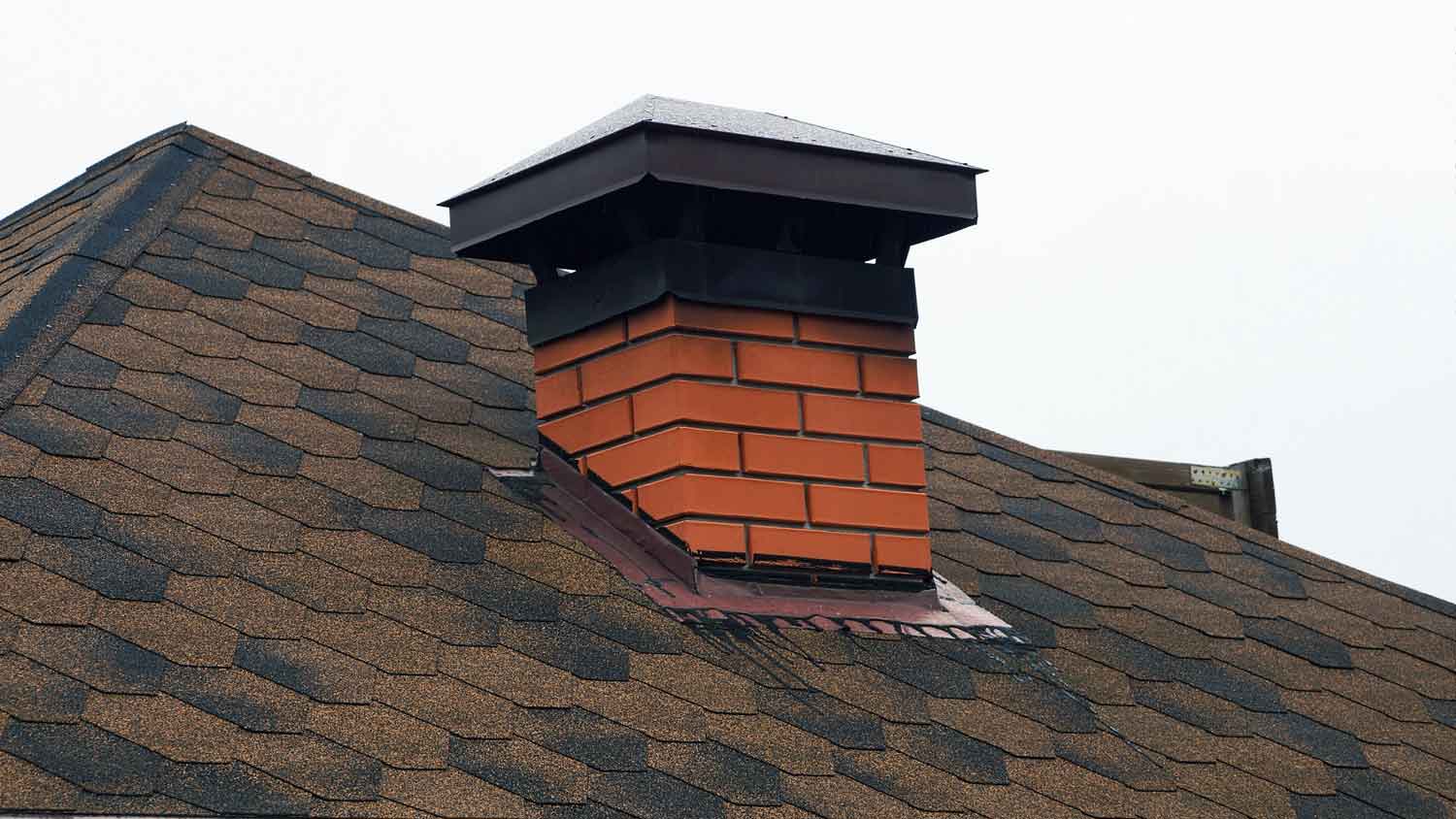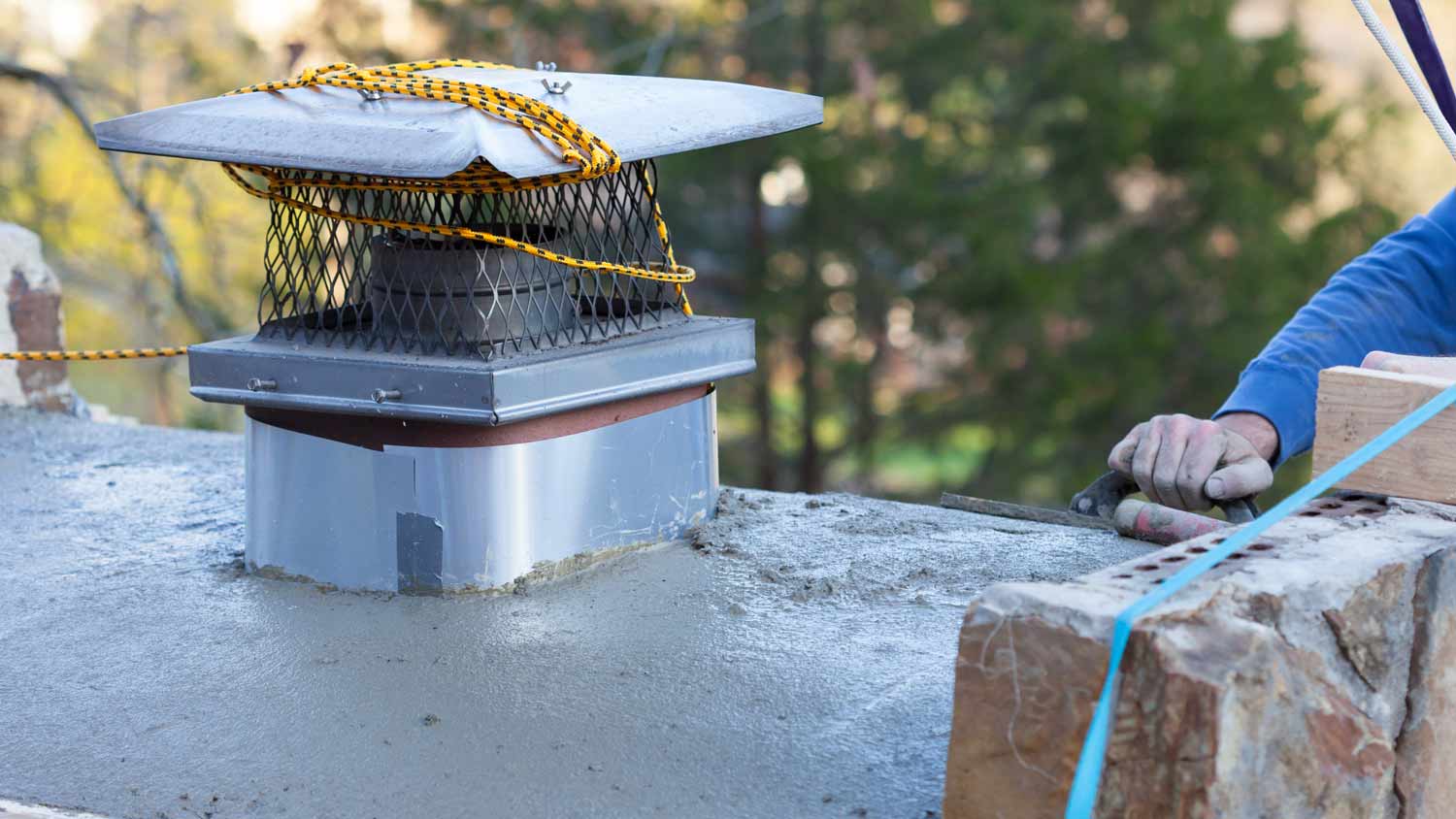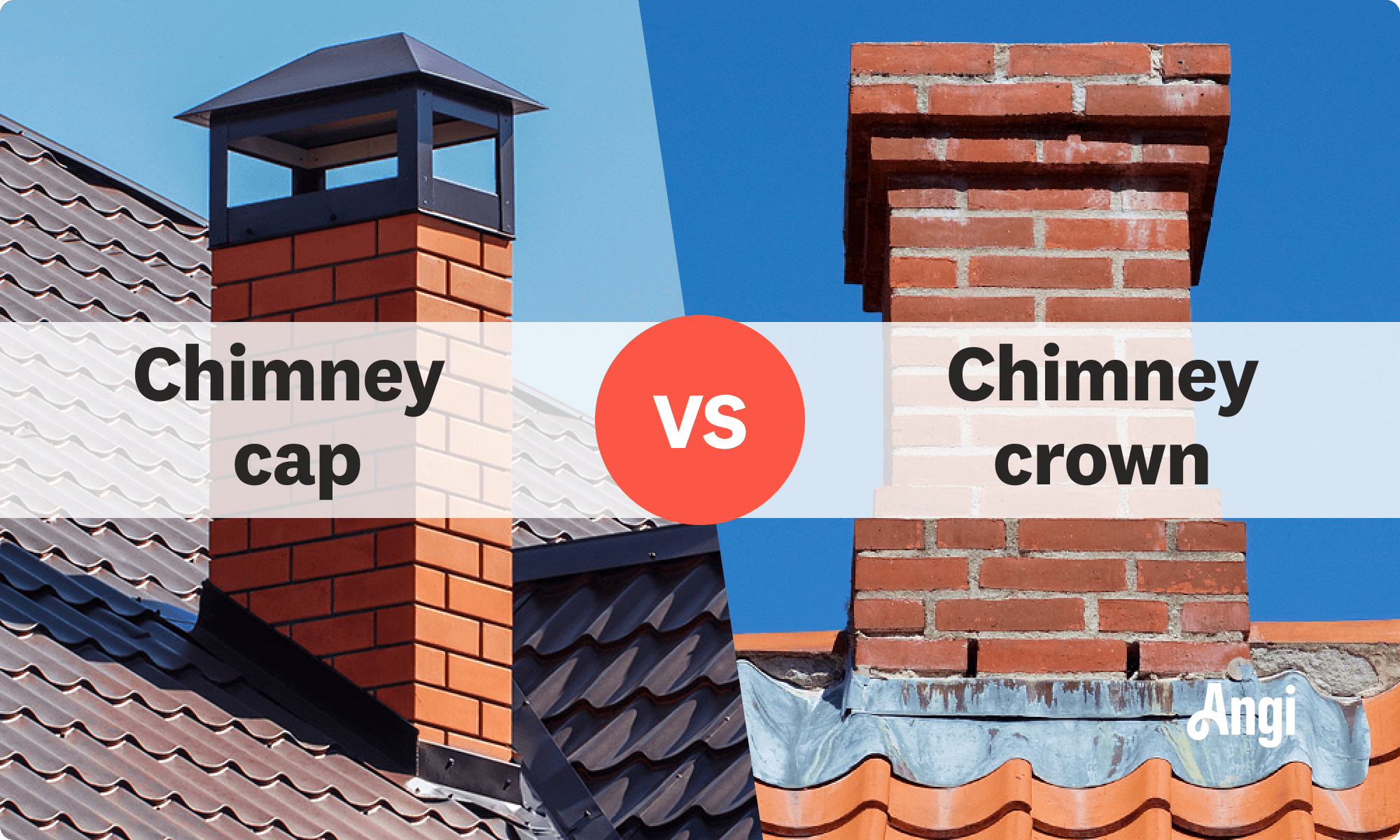
Sealing your chimney is one of the most affordable ways to prevent water from penetrating the bricks. This guide breaks down the cost to seal a chimney.
Neglecting your chimney’s crowning glory could lead to structural damage


Chimney crowns are installed over the top of a chimney to protect it from the elements.
Without a chimney crown, your chimney can become structurally unsound.
A well-maintained chimney crown can last 50 years or more, while a poorly maintained one may need replacement decades sooner.
Common signs of chimney crown damage include cracking, crumbling, efflorescence, spalling, and pooling water.
There’s nothing quite like a crackling fire to keep you warm and cozy during winter. But without the proper care, your chimney can start to leak and cause structural damage to your home. One of the most important parts of your chimney is the chimney crown. What is a chimney crown? In short, it helps protect the structure from water damage. Learn more about chimney crowns, why they’re essential to your chimney, and how to keep them in good shape.
A chimney crown is just one of many parts of a chimney. It is a large slab that sits on top of your chimney and protects it from the elements. Chimney crowns are often made from concrete, stone, or metal because these materials are water-resistant. Without a functional crown, the chimney may start leaking, leading to water damage to the chimney’s bricks and mortar and even structural damage.
Chimney crowns hang over the sides of a chimney and act like gutters, directing rain away from the main structure and onto the roof. This protects the bricks and mortar, which are more susceptible to water damage.

The three main types of chimney crowns are cast-in-place, precast, and floating:
Cast-in-place: This chimney crown is made by pouring concrete into a form placed atop the chimney. If your chimney was custom-built and is a non-standard size, you’ll probably need a cast-in-place crown.
Precast: This chimney crown is prefabricated off-site and installed onto a chimney. This type works well for standard-size chimneys.
Floating: This chimney crown extends over the edge of the chimney top, creating an overhang about two inches above the chimney. Floating chimney crowns can be trickier to install but can last longer than cast-in-place or precast ones.
The type of crown you have can affect repair or replacement costs. A chimney repair service near you can advise you on the best type of chimney crown for your needs and budget.
A chimney crown can last 50 years or more, but if it’s not maintained, it may need to be replaced after 20 years. So, proper chimney maintenance is essential to ensuring its longevity.
An annual chimney inspection can help ensure your crown is in good shape. If there are any issues, a pro can fix them before they worsen. It’s best to schedule an annual inspection so you can catch potential problems before they become too expensive to repair.
A chimney service technician can use crown sealant to repair minor problems. The pro will use this sealant to create a thin top coat that protects your chimney crown from water damage. However, if the crown is in poor condition, a pro may recommend rebuilding it.

It can be hard to spot chimney crown damage with the naked eye, so pros recommend an annual inspection. However, there are a few signs to watch out for:
Cracking or crumbling can allow moisture, dirt, and pests to get under the crown and into your chimney. It can also rust the damper and crack the flue tiles, adding to the list of required repairs.
Efflorescence is the official name for white stains caused by salt crystallization. Signs of efflorescence on your chimney could mean your crown isn’t sealed correctly and letting water seep into the structure.
Spalling is when the chimney masonry starts flaking off due to damage. If you notice flakes of your chimney crown falling into the chimney or off the roof, you likely need repairs.
Pooling water in the firebox or evidence of water in the chimney suggests your crown isn’t doing its job. Call a chimney inspector as soon as possible if you see water where there shouldn’t be.

You may have encountered the term “chimney cap” while looking into different parts of a chimney. Although “chimney crown” and “chimney cap” sound similar, they are two distinct elements of a chimney that protect it from water damage.
Both can help prevent moisture from entering the chimney, but while a chimney crown covers the entire top of the chimney, a chimney cap only covers the flue. Chimney caps are essential for preventing water, debris, and wildlife from entering your chimney. Having a local chimney cap and crown installer can help ensure these elements protect the structure from damage and increase its life span.
The cost to repair a chimney crown depends on the type and extent of damage, though the average price is $1,550. However, basic repairs may run as low as $100, while more extensive repairs or replacement can cost you $3,000 or more.
The exact cost also depends on the type of chimney crown material, any required prep work, and the labor cost in your area. For a specific estimate, consult a local chimney repair service.
From average costs to expert advice, get all the answers you need to get your job done.

Sealing your chimney is one of the most affordable ways to prevent water from penetrating the bricks. This guide breaks down the cost to seal a chimney.

Replacing your chimney increases home value and prevents hazardous structural damage. Learn how much to budget for chimney replacement costs.

Chimney repair costs can vary by the type of chimney you have and the required repairs. Use this guide to help you estimate project costs.

Learn how to clear a blocked flue to decide if you have the skill and the gear to tackle the task or if it’s best left to the professionals.

Chimney leaks are no joke, as they can lead to mold and water damage. Here’s who to call for a chimney leak to get this issue fixed quickly.

Parging a chimney’s smoke chamber is essential during installation or maintenance. We’ll explain what parging a chimney is and why and how it’s done.